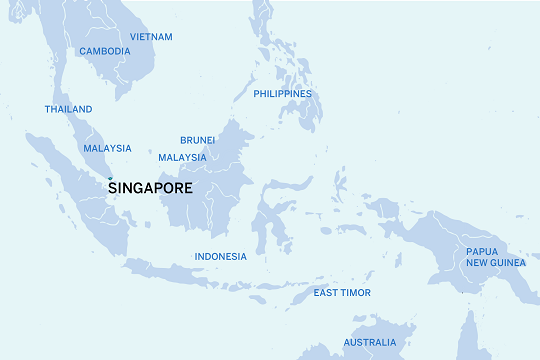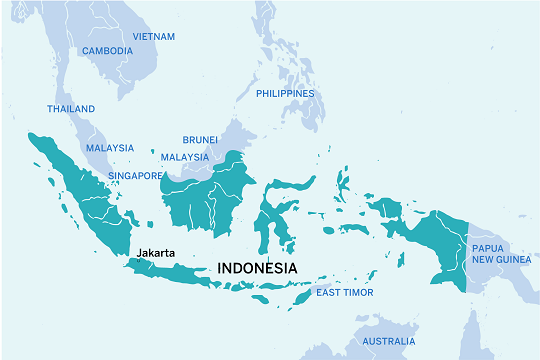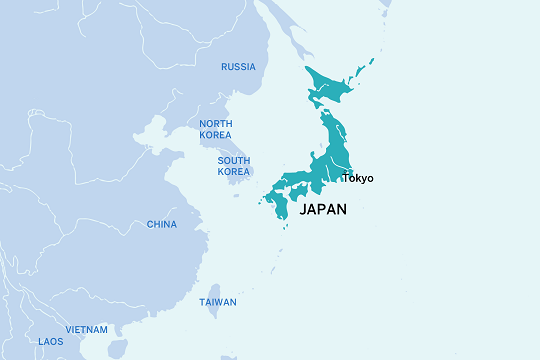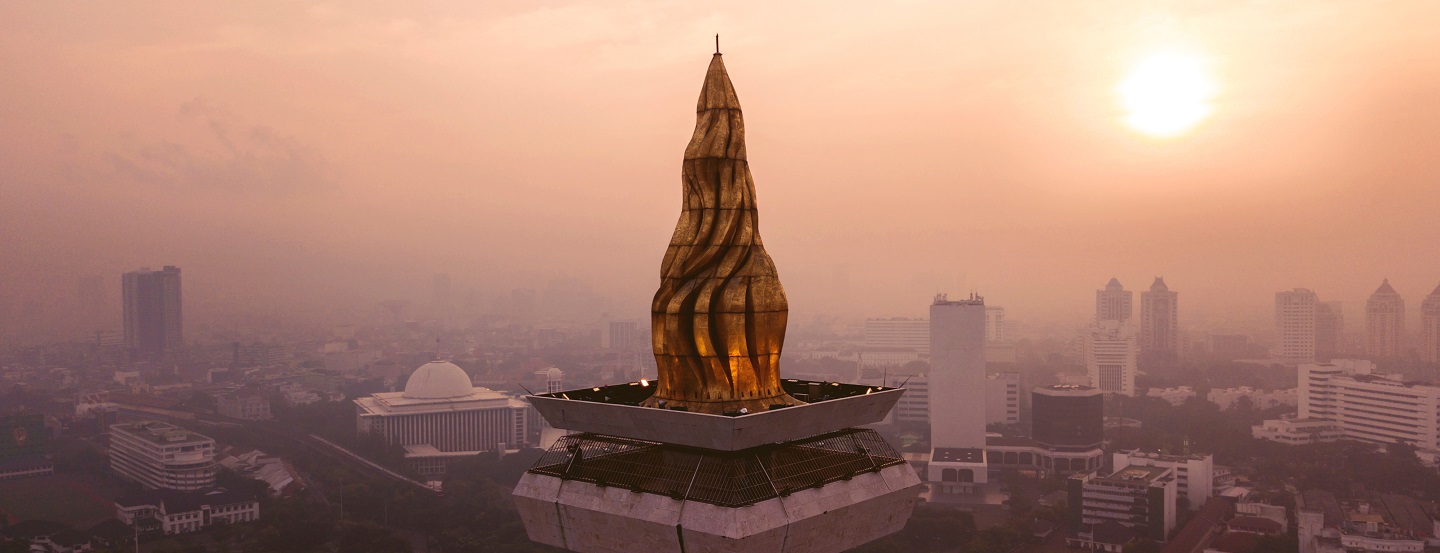For Canadian companies looking to expand into Southeast Asian markets, researching how to navigate the ins and outs of doing business in this diverse region is key. As a risk analyst for Export Development Canada (EDC), I’m set to embark on a market research mission to Singapore, Indonesia and Japan where I’ll help identify the opportunities and risks in these markets.
I’m focusing on these three nations because they’re likely to appeal to the broadest possible spectrum of potential and actual exporters.
- Singapore is an ideal choice for a regional base or branch because of its openness to trade, world class infrastructure, investor-friendliness and predominantly English-speaking population.
- For companies with a greater risk tolerance that are seeking to establish a presence in an emerging market with the world’s fourth-largest population, Indonesia is the place to be.
- Finally, Japan, the third-largest economy in the world, offers depth and significant under-utilized potential for Canadian goods exporters, especially those in the agri-food sector.
During my journey, I’ll meet colleagues from the Canadian Trade Commissioner Service (TCS) and our diplomatic officers as well as local experts and look forward to sharing personal insights with aspiring Canadian exporters.
Singapore: A strategic gateway

- Top Canadian exports (2018): Machinery, transportation equipment, chemical products
- Canadian exports total value (2018): $0.9 billion
- International trade agreement with Canada: Yes, the Comprehensive and Progressive Agreement for Trans-Pacific Partnership (CPTPP) came into effect December 2018
- Population: 5.4 million
- GDP per capita (2018): US$64,043
My journey will start in Singapore, which is home to EDC’s Asia-Pacific regional headquarters and our first financing branch ever established outside of Canada. EDC’s other international offices are representational offices where staff work to connect Canadian companies with local corporations. In Singapore, our staff do the same work, but there are also employees underwriting loans to large Asian corporations interested in procuring Canadian goods and services. With its strategic location as the gateway to Southeast Asia, Singapore is an ideal choice for our unique office. The tiny yet mighty island nation ranks second out of 140 countries listed in the World Economic Forum’s 2018 Global Competitiveness Report because of its superior infrastructure, world-class port, air links and openness to trade. It’s also why financial institutions, insurers and multinationals in numerous sectors have established their regional headquarters in the country. One drawback of Singapore’s success, however, is that setting up offices there can be costly due to the rental rates in certain parts of the city and a tight labour supply.
Opportunities for Canadians
Many Canadian companies have already capitalized on the opportunities offered by Singapore. In the past five years, Canadian exports to Singapore have averaged about $1 billion, placing it within the top 30 export destinations by value. Pension funds, banks, engineering and advisory services providers all have a presence. However, according to the TCS, there’s significant untapped potential for Canadian companies, including small- to medium-sized enterprises (SMEs), in the agri-food and seafood sector, cleantech, fintech, and life sciences sectors, among others. As a case in point, one of my most interesting findings when researching our trade was that the value of Canadian fish and seafood exports to Singapore grew by 28% from 2013 to 2018, increasing from about $4 million to more than $14 million.
You should also check out
Singapore’s robust market provides an excellent springboard for Canadian companies looking for growth in Asia. Join us and prepare to make the leap.
Learning goals
Throughout my trip, I’ll be listening to local perspectives and sharing my findings, including how the recently ratified CPTPP is affecting trade between Canada and Singapore. The latter already has minimal to no duties on most imports, so there are unlikely to be major tariff-related gains. However, the agreement may unlock opportunities for integration between Singaporean and Canadian companies working to offer goods or services to other signatories of the agreement. Risks to trade will also be on my research agenda and I’ll inquire about the different ways in which the United States-China trade tensions are affecting Singapore and other regional economies.
Indonesia: Diamond in the rough

- Top Canadian exports (2018): Wheat, fertilizer, paper goods
- Canadian exports total value (2018): $2.1 billion
- International free trade agreement with Canada: No
- Population: 262.9 million
- GDP per capita (2018): US$3,963
My next stop will be Jakarta, the capital of Indonesia, less than a two-hour flight from Singapore. Despite their geographic proximity and cultural interconnections, the contrast between Indonesia and Singapore couldn’t be greater. Singapore is a city state of slightly more than five million people on a relatively small island with an advanced economy specialized in advanced services, electronics and high-tech exports. Indonesia, on the other hand, is a rapidly expanding emerging market stretched over a geographically vast archipelago with a population of more than 260 million. Its economy is centred on somewhat low-cost manufacturing exports, palm oil, rubber, metals and minerals, and energy commodities.
Opportunities for Canadians
Canada’s traditional big-ticket exports to Indonesia have been wheat, fertilizer, wood pulp and machinery and transportation equipment. Between 2014 and 2018, the value of Canadian exports to Indonesia averaged about $1.8 billion, which is likely below potential, considering that its GDP exceeds US$1 trillion, placing it in the top 20 largest economies in the world.
There’s considerable scope for growth in the cleantech sector, agri-food, oil and gas services and equipment and educational services. Indonesia’s large population, rapidly growing middle class and strong projected economic growth rate offer opportunities for Canadian suppliers and investors that can’t be found in a more mature economy. But with that opportunity comes greater risk in legal or contractual enforcement, government regulations which can be process-intensive, plus potential currency volatility.
Learning goals
In Indonesia, I aim to better understand the challenges and political risk international companies face doing business there. Like other countries, Indonesia’s politics have become increasingly polarized in recent years. I hope to learn more about the dynamics underlying this trend, as well as more about the country’s state-owned enterprises, government infrastructure plans and the perception international investors have of the business environment.
Japan: Mature and dynamic

- Top Canadian exports (2018): Metals, vegetable products, animal products
- Canadian exports total value: $12.8 billion
- International trade agreement with Canada: Yes
- Population: 127.2 million
- 2018 GDP per capita: US$39,081
The last leg on my journey is Tokyo. Japan’s economy has been the subject of much gloom since the early 1990s, but the country remains the world’s third-largest economy, after the U.S. and China. Japan’s companies are among the most global in the world. It’s no surprise then that, of all the Asian countries, Japan accounts for the greatest share of international investment in Canada.
Opportunities for Canadians
Japan is also Canada’s fourth-biggest customer. Canadian exports to Japan reached $12.7 billion in 2018, after seeing average annual growth of nearly 5% in the past five years. Historically, the lion’s share of Canadian exports to Japan has been metals and minerals, agri-food and seafood, forestry products and, to a lesser extent, machinery and chemical products. The CPTPP provides scope for additional growth for these traditional sectors. Canadian goods that will see the biggest tariff savings under the agreement and will likely benefit from increased sales include wheat and barley, pork products, beef and wood products. However, a broad range of Canadian industries, including everything from digital services providers, cleantech innovators and companies in the defence and security industry, are likely to have favourable prospects in Japan, according to Canada’s TCS.
You should also check out
With the Comprehensive and Progressive Agreement for Trans-Pacific Partnership (CPTPP), Japan is offering more opportunities than ever for Canadian companies. Learn more in our upcoming webinar.
Learning goals
In Japan, I intend to meet with area experts and to discuss the long-term outlook for the economy and the social well-being of its citizens, given the rapid aging of the Japanese population and its steadily declining birth rate. A key question will be to hear how Japanese experts think the economic and social challenges related to the demographic issue can be addressed. I hope to come away with insights for Canadian companies interested in knowing what kinds of goods and services are most likely to be in demand in Japan as it transitions to a new social model dubbed “Society 5.0.”
For more detailed insights, please visit the Country Risk Quarterly, a go-to interactive guide that offers timely economic and political information on more than 50 countries, including Indonesia, Japan and Singapore. It allows you to stay on top of rapidly changing markets, new opportunities and the latest risks, and offers valuable insights on payment experience and risk-rating drivers to help you make informed trade and investment decisions.








